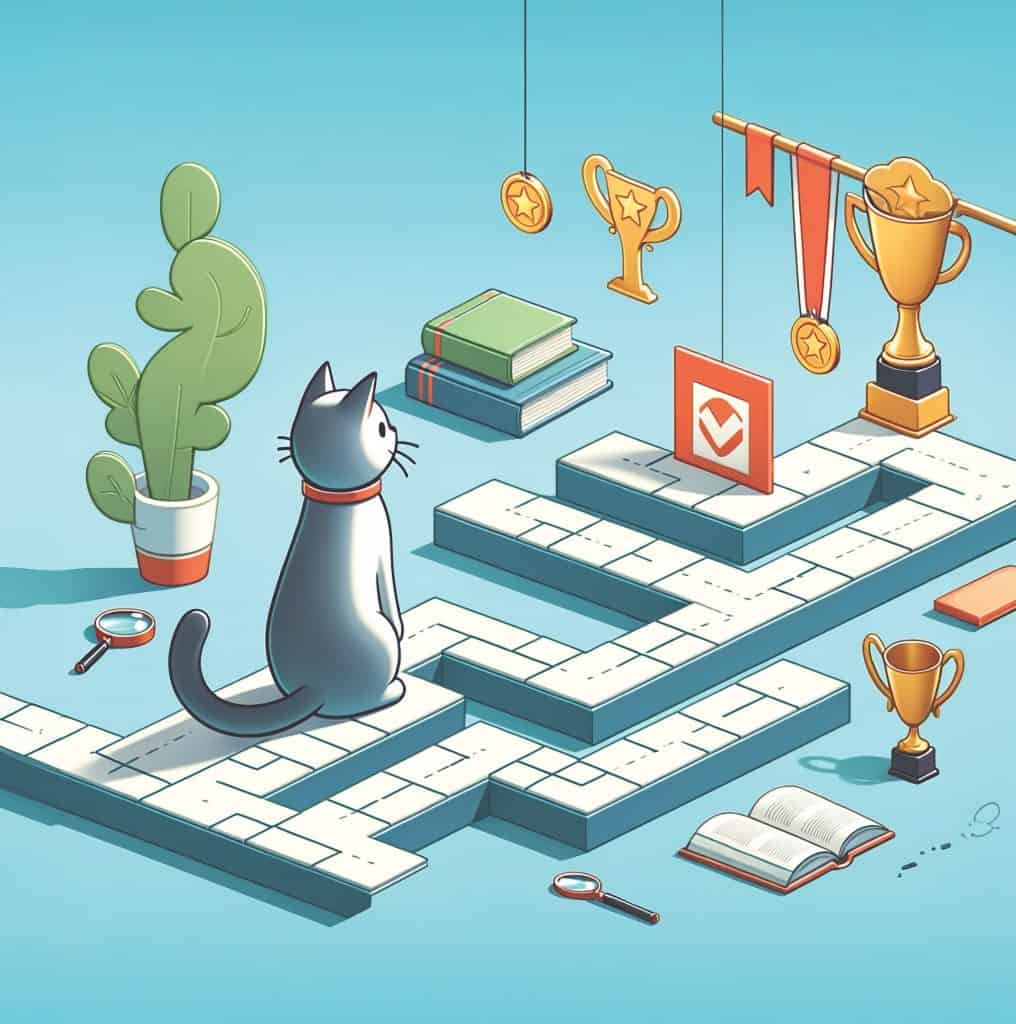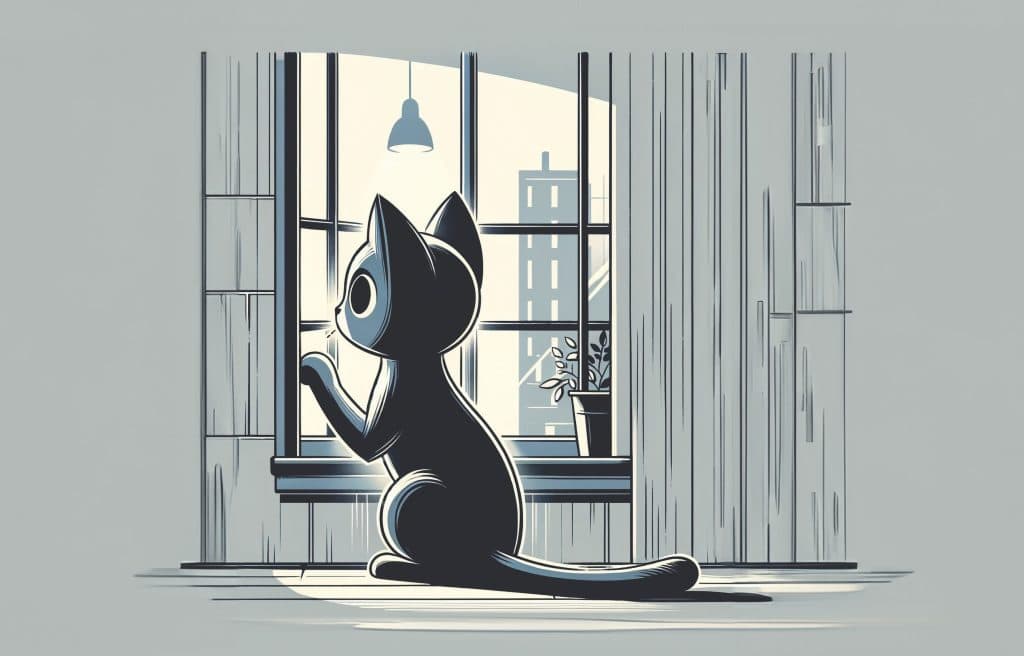“Curiosity killed the cat” is a familiar cautionary expression often used to warn against being too nosy or inquisitive. But there is an extended version of this idiom, less common but more optimistic and uplifting. It reads, “Curiosity killed the cat. But satisfaction brought it back,” suggesting that while curiosity may lead to trouble, the satisfaction gained from exploring and poking around can redeem the situation. Don’t cats have nine lives anyway?
The Information Gap Theory of Curiosity
In 1994, academic George Lowenstein theorised that curiosity arises when a person feels a discrepancy between what they do not know and what they want to know. This concept is known as the “information gap theory of curiosity”. The theory suggests that when there is a gap in knowledge, we are instinctively triggered to close it. Like a puzzle, our brains want to fill in the blanks, leading to curiosity and engagement. Ever felt the urge to Google something simply because you need to know? That’s the curiosity gap at play.
Curiosity: An Intrinsic Trait
Humans are curious by nature. In fact, it is a part of our survival instincts; we use it to understand our environment and form relationships with others. As humans evolve, curiosity becomes a motivation to gain new knowledge, enabling us to make smarter choices and get ahead in life. And because we crave novelty and pleasure, we develop a curiosity for new experiences, such as trying exotic foods and travelling to uncommon destinations. Our curiosity is an essential part of human and societal evolution.
The Gradual Erosion of Curiosity
If we were born curious creatures, why are adults seemingly less curious than children? As we mature, societal pressures, the weight of responsibilities, and our hamster wheel of routines and habits can overshadow our once-curious spirit. Some of us might even convince ourselves that we already know everything that we need to know. Or it could be our mighty ego at play. In this digital age, we might also find ourselves overstimulated and spoilt by the constant accessibility of information, so much so that we simply accept any information that is convenient and are not motivated to investigate further.

The Correlation of Curiosity & Success
Einstein once declared, “I have no special talents. I am only passionately curious.” It makes you wonder if perhaps success is not all about IQ or special skills but about being wildly curious.
It is no coincidence that some of the most successful entrepreneurs and innovators are known for their insatiable curiosity. When we are curious, we want to learn more. We explore new ideas and experiences with an open mind, without the fear of uncertainty, judgement, and failure. Curiosity also makes us question the usual way of doing things and look for ways to make things better. And in doing so, we unlock our creative potential. Being curious also makes us better leaders because we challenge not only ourselves but also others, inspiring a culture of curiosity, engagement, and collective growth.
Harness the Power of Curiosity for Success
Now that we understand knowledge gaps trigger curiosity and that curious individuals are often successful, as a student constantly surrounded by such gaps, it is important that you continue to nurture your curiosity and avoid losing it. Follow these tips to harness the power of curiosity in your academic and personal development.
1 Embrace the Knowledge Gap
Instead of viewing gaps in your knowledge as roadblocks, see them as opportunities for exploration. When you encounter a question or a concept that piques your interest, dive in and look it up immediately!
2 Ask Questions
Don’t be afraid to ask questions during lectures and discussions. Curiosity thrives on inquiry, and asking questions not only helps you understand better but also empowers others to speak up, cultivating a dynamic learning environment.
3 Create a Curiosity Journal
Maintain a curiosity journal to document your questions, thoughts, and discoveries. Jot down anything that sparks your interest. And if you ever feel that you are running out of ideas, change things up and do something different. It can be as simple as taking a different route to school. Change can help you discover things you may have missed or see them in a different light. By maintaining a curiosity journal, you can track your knowledge growth and uncover patterns that spark new avenues of curiosity.
4 Explore Beyond the Curriculum
Don’t limit your learning to the academic curriculum. Explore related topics and seek out additional materials. You might even want to initiate a personal project and ask your professors if they can mentor you. Self-directed learning often results in a deeper understanding and greater curiosity, allowing you to actively engage with your education and offering a more meaningful learning experience.
5 Participate in Cross-Disciplinary Learning
It is not uncommon to have multiple passions. For example, someone interested in medicine may also be drawn to engineering or business. In fact, healthcare innovation requires the collaboration of all these various expertise. In today’s interconnected world, almost every field is linked to another. Nurture a holistic view of interconnected knowledge by exploring the connections between disciplines. Many universities today offer programmes integrating multiple disciplines; some clubs and groups bring together students from diverse majors. You can also seek out projects that require collaboration across various fields.
6 Seek Out Diverse Sources
Thanks to the internet, information is everywhere. But when supplementing your learning using online resources, do so mindfully. Evaluate the credibility of your content sources to ensure that your curiosity is fed with reliable information. Meanwhile, do not overlook the timeless sources from the pre-internet age. Attend events and talks, visit museums, or engage in community activities that align with your interests. Make it a habit to talk to people with different beliefs than your own to recognise your biases and assumptions and cultivate an open mind.
7 Embrace Challenges & Cultivate a Growth Mindset
Finally, as the saying goes, “If there is no struggle, there is no progress.” Learning inherently involves challenges and self-motivation. Adopt a growth mindset by viewing obstacles and setbacks as opportunities for learning and improvement. Curiosity itself is a powerful motivation. So, let it be your guide. Remember, while the journey of curiosity is personal and unique, it should always be fun. May you graduate from the “School of Curious Cats” with nine lives intact!

